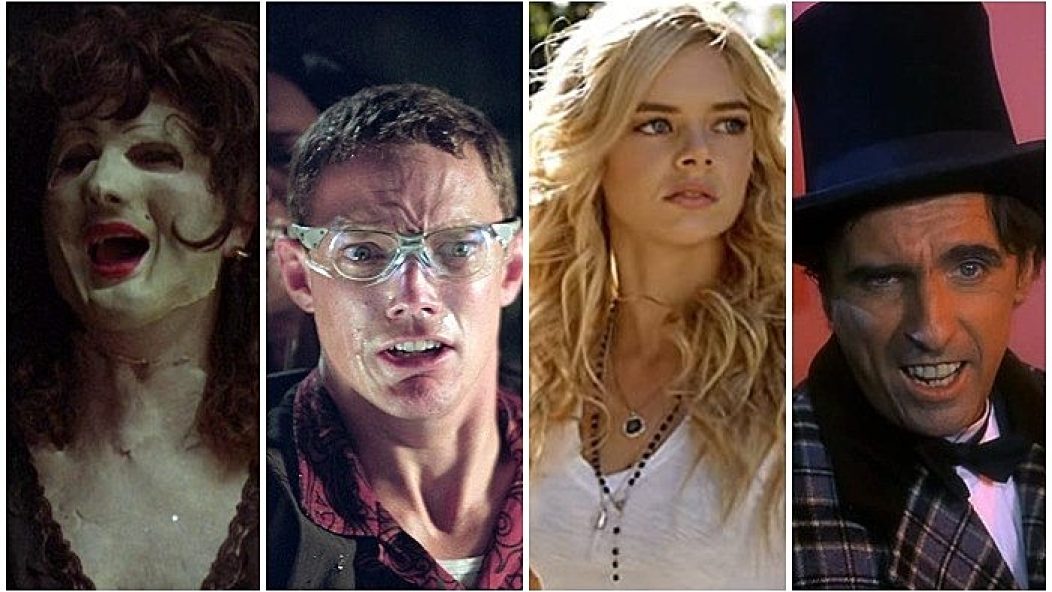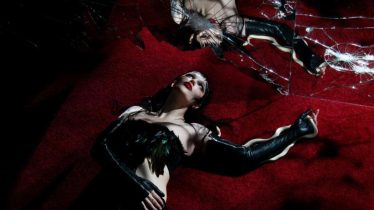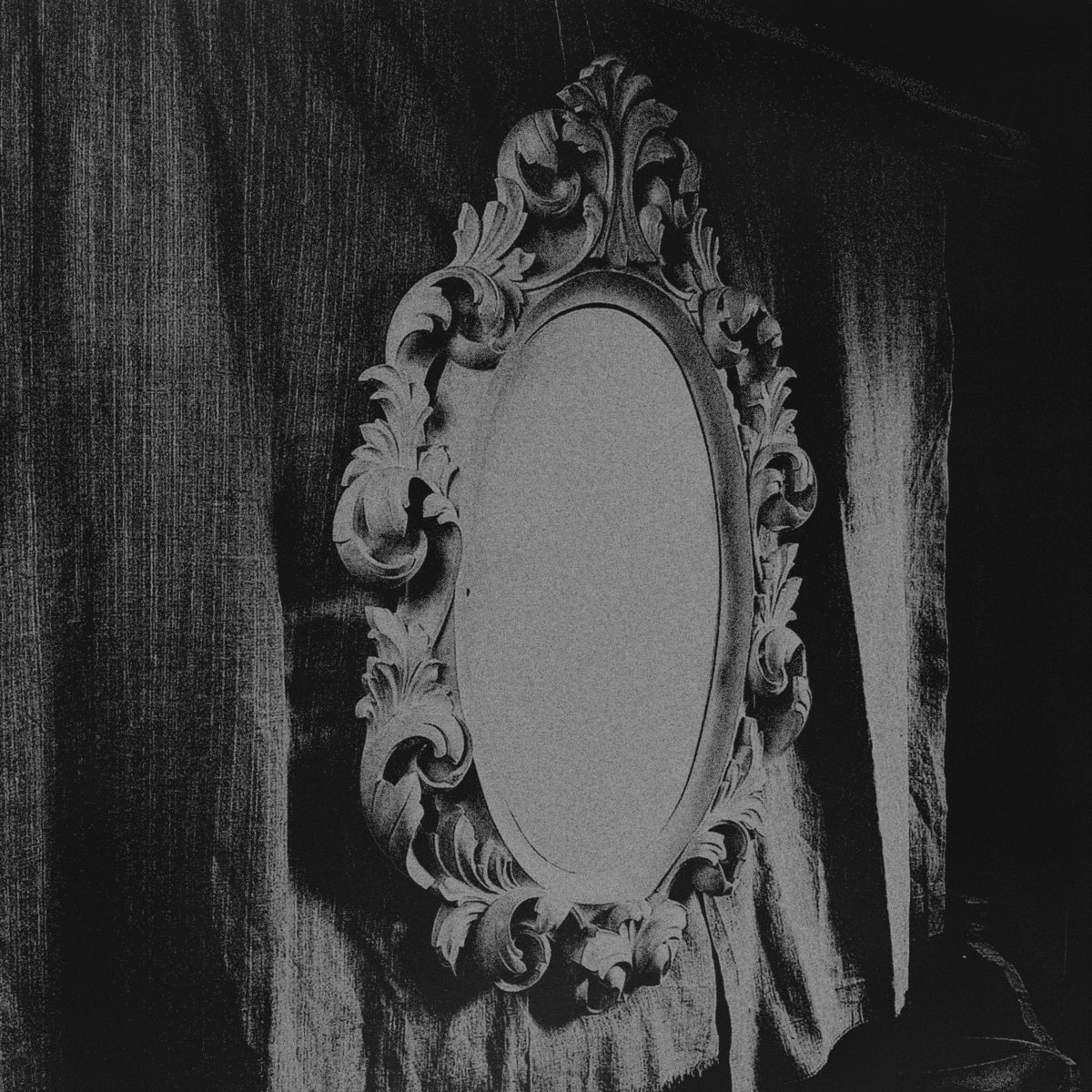
20 guilty pleasure horror movies that true genre fans will love
In his 1981 book Danse Macabre, legendary author Stephen King makes a potent defense for the kind of films that are often labeled “guilty pleasures.” “I’m no snob,” King writes, “and if you are, that’s your problem. In my business, if you lose your taste for good baloney, it’s time you got into some other line of work.”
In a genre that so easily lends itself to exploitation and cheap thrills, horror fans find themselves eating a lot of baloney. Fans are always looking for a gourmet meal such as The Exorcist, but sometimes less-refined fare can still hit the spot. Call them “guilty pleasures” or “cinematic junk food,” but what follows are 20 so-bad-they’re-good horror flicks to satiate your appetite for terror.
Read more: There’s a reason why the ‘Haunting Of Bly Manor’ ghosts are harder to find
Motel Hell (1980)
Kevin Connor’s darkly comedic Motel Hell is the ultimate ’80s horror movie. Rife with gore, cannibalism, a climactic chainsaw duel and a wickedly black sense of humor, this film has become a cult classic. Rory Calhoun stars as farmer Vincent Smith, the amiable proprietor of the Motel Hello, which he manages with his eccentric sister, Ida (Nancy Parsons). The motel, however, is only a sideline for the siblings. Their real moneymaker is Vincent’s award-winning sausage made from only the best “meat” cultivated in his secret garden. Not just a Texas Chainsaw Massacre clone, Motel Hell is a surprisingly witty and effective thriller that outshines many of the better-known slashers of the era.
Night Of The Lepus (1972)
Night Of The Lepus is one of those films that must be seen to be believed. Charmingly awful, the sheer preposterousness of its premise combined with the deadly serious performances of its cast (which includes the original Star Trek’s DeForest Kelly and Psycho’s Janet Leigh) must be experienced to be appreciated. Based on the 1964 novel Year Of The Angry Rabbit by Russell Braddon, Night Of The Lepus is the story of an Arizona ranch besieged by giant mutant rabbits. Yes, rabbits. The fact that bunnies just aren’t scary is driven home by the film’s uninspired special effects, which consist of ordinary pet store rabbits blithely hopping over miniature sets Godzilla-style. At the film’s climax, the furry menace is defeated by some quick thinking and the judicious use of electricity, sparing the Earth from the cutest apocalypse ever.
Anna And The Apocalypse (2017)
A zombie Christmas musical shouldn’t work, but Anna And The Apocalypse succeeds brilliantly. Ella Hunt stars as the eponymous Anna, a student in her last year before leaving for university. Just before Christmas break, her plans are derailed by a plague of the living dead. As society crumbles, Anna and her friends sing, dance and fight their way across a ruined landscape of holiday cheer and flesh-eating corpses. Anna And The Apocalypse gleefully wears its many influences, ranging from The Rocky Horror Picture Show to Dawn Of The Dead, on its sleeve with both respect and affection.
Monster Dog (1986)
The godfather of shock rock Alice Cooper stars as pop star Vince Raven in Monster Dog from director Claudio Fragasso (remember this name, you’re going to see it again). Returning to his childhood home to shoot a video for his new single, Raven and his crew find themselves at the center of a series of savage killings committed by a pack of wild canines led by a misshapen, wolflike creature known as the Monster Dog. Shot in 1984, a newly clean and sober Cooper is game for the Spanish production’s B-movie silliness. A natural showman, Cooper’s charisma shines through the film’s incoherent plot and inane dialogue, making Monster Dog an unexpectedly atmospheric and fun horror romp.
The Children (1980)
Not to be confused with the 2008 British horror film of the same name, 1980’s The Children, directed by Carlton J. Albright, is a mean-spirited, low-budget shocker about a group of elementary school kids transformed into radioactive killers when their school bus drives through a bank of toxic fog. Distinguishable only by their blackened fingernails, the terrible tots are imbued with a poisonous, burning touch that cooks their victims alive. Met with near-universal derision on its release, the film gained a cult following, thanks to repeated screenings on the USA Network’s weekend monsterfest Commander USA’s Groovie Movies in the late ’80s. In 2005, schlockmeister Lloyd Kaufman’s Troma Studios gave The Children a wholly unwarranted but welcome 25th anniversary DVD release.
Maximum Overdrive (1986)
Maximum Overdrive plays like the coke-fueled fever dream of an unhinged King, which is not surprising because that’s exactly what it is. The celebrated horror author’s only foray into directing, the film is based on his 1973 short story “Trucks” about sentient machines turning on humanity. With an appropriately grinding soundtrack by AC/DC and ‘80s brat packer Emilio Estevez making a surprisingly effective transition to action hero, the film’s elements never quite add up to the sum of its potential. Nevertheless, Maximum Overdrive is an often exciting Day-Glo nightmare that shamelessly embraces its ridiculous premise.
The Babysitter (2017)
McG, best known for his highly stylized, big-budget Charlie’s Angels films, brings his kinetic visual style to the horror genre with The Babysitter. Released by Netflix in 2017, the film stars Samara Weaving as Bee, the coolest babysitter ever and pal to 12-year-old Cole (Judah Lewis). With his parents out of town for the night, Cole, encouraged by his best friend Melanie (Emily Alyn Lind), spies on Bee after his bedtime. What he discovers may cost him his life. Fast-paced and funny, The Babysitter is a suspenseful, gory romp that, despite not being a particularly smart horror film, gets by on its relentless style and the chemistry of its young cast that also includes Bella Thorne.
Dracula A.D. 1972 (1972)
By the early 1970s, Hammer Studios, which had built its reputation as Great Britain’s finest purveyors of gothic horror, thanks to a long-running series of period Dracula films starring Christopher Lee, found that its money-making monster was growing long in the tooth. In an attempt to reverse the vampire’s declining fortunes, the studio decided to resurrect the venerable bloodsucker in swinging ‘70s London in the ill-fated Dracula A.D. 1972. Brought back to life by a hipster cultist named Johnny Alucard (Christopher Neame), Dracula is soon back to his bloodthirsty ways. Peter Cushing co-stars as Lawrence Van Helsing, a descendant of Dracula’s old nemesis and the only man capable of stopping the vampire once and for all. Much better than its reputation, Dracula A.D. 1972 is far superior to its similarly themed 1973 successor The Satanic Rites Of Dracula, which would be Lee’s seventh and final appearance in the role.
Troll 2 (1990)
Along with Tommy Wiseau’s The Room and Edward D. Wood Jr. ‘s Plan 9 From Outer Space, Fragasso’s Troll 2 holds the distinction of being a contender for the title of worst movie ever made. An in-name-only sequel to 1986’s Troll, Troll 2 stars George Hardy as wannabe farmer Michael Waits, who moves his family to the small town of Nilbog (yes, that’s “goblin” spelled backward). However, the family’s relaxing vacation in the country turns into a nightmare when they run afoul of vegetarian goblins bent on turning them into plants. Featuring a cast of amateur and first-time actors, Troll 2 is an unintentionally hilarious, eminently quotable (“You can’t piss on hospitality!”) and often surreal film. Any viewing of Troll 2 must be accompanied by co-star Michael Stephenson’s award-winning 2009 documentary Best Worst Movie, which chronicles the making of the film as well as its rise to cult status.
Texas Chainsaw Massacre: The Next Generation (1995)
Originally released as The Return Of The Texas Chainsaw Massacre but best known as the cinematic skeleton in stars Renee Zellweger and Matthew McConaughey’s closets, Texas Chainsaw Massacre: The Next Generation is easily the weirdest of the original film’s sequels. Essentially a retread of the tried-and-true slasher formula, this outing has high school kids falling prey to Leatherface and his murderous family on the night of their prom. Inexplicably, director Kim Henkel, co-writer of the original film, adds a subplot that casts Leatherface and company as part of an Illuminati experiment. The highlight of the film, however, is McConaughey’s performance as a new addition and de facto leader of the cannibal family, Vilmer—an over-the-top piece of scenery-chewing worthy of anything he’s done since.
Tucker & Dale Vs. Evil (2010)
Eli Craig’s horror-comedy Tucker & Dale Vs. Evil is an inspired upending of horror film cliches that skewers the classic genre trope of murderous hillbillies. Alan Tudyk and Tyler Labine star as good-natured, redneck buddies Tucker and Dale, who have their backwoods vacation ruined by a group of apparently suicidal kids from the city. Although Tucker & Dale is essentially a one-joke movie hinging on repeated misunderstandings based on the hillbilly stereotype, it makes its point with both style and humor without ever turning preachy or pedantic.
Tusk (2014)
’90s indie film darling and stoner icon Kevin Smith made his boldest move into the horror genre with the 2014 thriller Tusk. Based on a hypothetical premise inspired by a fake classified ad, Smith and longtime creative partner Scott Mosier hashed out the broad strokes of Tusk on the director’s popular SModcast podcast. A Cronenberg-esque foray into body horror, Tusk stars the late Michael Parks as the reclusive Howard Howe, a former sailor obsessed with the walrus that saved his life after a shipwreck. When snarky podcaster Wallace Bryton (Justin Long) attempts to interview Howe, he learns firsthand the depth of Howe’s obsession and insanity. Marred somewhat by Smith’s occasionally clunky dialogue and humor, Tusk succeeds almost entirely on Parks’ performance. Still, Smith manages to hold the directorial reins just tight enough to keep the gory affair on track.
Blacula (1972)
Blacula is a criminally underrated horror film saddled with a terrible title. Part of the blaxploitation wave of the 1970s, Blacula avoids much of that subgenre’s negative connotations and stereotypes to deliver a relatively traditional yet still Afrocentric horror film. William Marshall stars as the African Prince Mamuwalde, who’s transformed into a vampire by Count Dracula in the 18th century. Trapped in a sealed coffin by the diabolical count, the vampire prince is revived in 1970s Los Angeles where he encounters a woman (Vonetta McGee) who may be the reincarnation of his wife. Marshall, with his rich, stentorian voice and imposing presence, brings both power and dignity to his portrayal of Prince Mamuwalde, rivaling Lee’s Dracula.
Attack Of The Mushroom People (1963)
A staple of American late-night TV throughout the ’60s and ‘70s, Ishirō Honda’s Attack Of The Mushroom People is a largely forgotten gem. Honda, best known for the 1954 classic Godzilla, gets the rare opportunity to direct a more intimate and atmospheric horror film with this loose adaptation of William Hope Hodgson’s 1909 short story “The Voice In The Night.” Released theatrically as Matango in Japan, Attack Of The Mushroom People focuses on a group of shipwreck survivors who are slowly transformed into living fungi after ingesting mutated mushrooms. Far more subtle and character-driven than his more famous work in the kaiju subgenre, Attack Of The Mushroom People is a testament to Honda’s underused directorial skills.
Thirteen Ghosts (2001)
What happens when Hollywood remakes an old horror movie that wasn’t that great to begin with? Sometimes you get an enjoyable mess such as 2001’s Thirteen Ghosts. A loose retelling of William Castle’s 1960 supernatural thriller, Thirteen Ghosts takes the original’s plot centered on a family inheriting a haunted house from an occultist uncle and adds a glossy, high-tech veneer to an otherwise traditional ghost story. In a nod to the original’s consummate showman director, the film even manages to work Castle’s Ilusion-O ghost viewer gimmick into the film as a plot point—a fun bit of fan service for devotees of classic B-movie horror. Although the film is relatively light on scares, the design of the ghosts realized by KNB EFX Group is consistently interesting and original.
Tourist Trap (1979)
Tourist Trap, released in 1979, is a grimy but effective slasher film that rarely gets its due as a prime influence on the development of the genre. In a twist on the Texas Chainsaw Massacre formula, a group of young people find themselves stranded in the middle of nowhere, thanks to a flat tire. Looking for help, they stumble upon a decrepit roadside attraction run by the kind but eccentric Mr. Slausen (Chuck Connors). One by one, the friends are murdered by a masked killer, leaving only the resourceful final girl Molly (Jocelyn Jones) to unravel the dark secret of Slausen’s museum of mannequins. A supernatural twist on the standard slasher film, Tourist Trap is a claustrophobic thrill ride that brings the scares with minimum gore.
Rats: Night Of Terror (1984)
Set two centuries after a nuclear war has decimated most of the Earth, a band of scavengers take refuge in an abandoned town in a desperate search for food. This gang of Road Warrior rejects soon falls prey to the town’s only living inhabitants: thousands of hungry, man-eating rats. Directed by Italian exploitation master Bruno Mattei with some help from Fragasso (remember him?), Rats is 97 minutes of incoherent, ’80s low-budget cheese with an unexpected ending that makes the film’s torturous running time worth the slog.
REC 3: Genesis (2012)
A controversial film among fans of the REC series, REC 3: Genesis abandons the grim tone and found-footage style of the first two installments for a more action-oriented, comedic tone reminiscent of Evil Dead II and Shaun Of The Dead. Moving from the zombie-besieged apartment building of the earlier films, REC 3 takes place in a new setting: the wedding of young lovers Koldo (Diego Martin) and Clara (Leticia Dolera). With her nuptials interrupted by a horde of the living dead, Clara trades her bouquet for a chainsaw in a bloody brawl that pits the living against the dead. REC 3 may not match REC and REC 2’s supernatural frights, but it does give horror fans a welcome new heroine who gives even Bruce Campbell a run for his boomstick.
Devil Times Five (1974)
Devil Times Five confirms everyone’s worst suspicions about children. Directed by Sean MacGregor, the film follows the bloody exploits of five escapees from a psychiatric hospital for homicidal children. After surviving a deadly bus crash that leaves their adult caretakers dead, the beastly brats take refuge at a winter chalet occupied by a group of wealthy vacationers. The seemingly innocent kids knock off their snobbish hosts in a variety of interesting ways, from good old-fashioned ax murder to releasing live piranhas in one hapless victim’s bath. An oddly satisfying exercise in preteen mayhem, Devil Times Five features a particularly menacing performance by Leif Garrett just before his rise to fame as a ‘70s teen pop idol.
Kingdom Of The Spiders (1977)
Long before Arachnophobia, William Shatner fought nature’s most fearsome eight-legged killing machines in 1977’s Kingdom Of The Spiders. Starring as veterinarian Rack Hansen, Shatner is determined to find out what’s killing off the cattle in an Arizona farming community. After discovering huge quantities of spider venom in a dead calf, the doctor comes to the conclusion that the normally cannibalistic local tarantula population is becoming organized to take down bigger prey, and humans are on the arachnids’ menu. To no one’s surprise, Shatner pulls off a typically Shatnerian performance complete with pregnant pauses and overwrought bursts of emotion. Nevertheless, Kingdom Of The Spiders works incredibly well as a nature-run-amok, eco-horror movie featuring some outstanding special effects work and the use of real tarantulas. A real creepy crawler, Kingdom Of The Spiders delivers a visceral punch rooted in one of man’s oldest fears.







